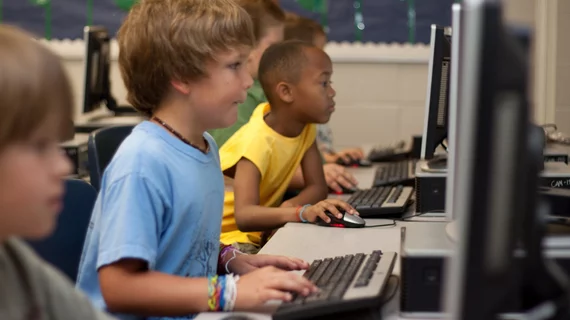AI and entertainment are changing primary education. Can radiologist training be far behind?
If you want to know how radiologists will learn their jobs 10 to 20 years from now, take a look at the ways many schoolkids learn their subjects in the 2022-23 school year.
Motored by technology, changed by the COVID pandemic and fine-tuned locally by demographic change, children’s education is morphing into a personalized, direct-to-consumer—or direct-to-learner—industry.
Meanwhile today’s schoolkids are tomorrow’s healthcare consumers.
To keep up, radiology must accept that instructing trainees at workstations “may never again be a standard way that radiology attendings teach.”
All of this is from the mind of a contemporary education pioneer, Steven Wolfe Pereira, who co-founded the company behind the popular “storyteaching” app Encantos.
Pereira expounds on his vision in a brief think piece published in the September edition of JACR [1]. His co-authors are Johns Hopkins radiologists Elliot Fishman, MD, and Steven Rowe, MD, PhD.
Along the way, the authors make some compelling predictions about the shape education will soon take. Binding their forecasts together is a cord of three strands—AI, digital connectivity and, yes, entertainment.
Here are examples.
65% of children entering primary school today will ultimately wind up working in jobs that currently do not exist.
Education has traditionally been separate from entertainment and technology. In the evolving world we live in today, that cannot continue to be the case.”
Entertainment will educate and inspire.
Think of pure entertainment as candy and pure education as vegetables—we can take the important parts of both and not deprive children of either.
Over the next decade, AI will transform education.
The 20th century was about mass markets, but in the AI era there will be markets of one. Everything will be enabled by the cloud and will be personalized and hyper-local.
Entertainment and storytelling will be better leveraged to keep kids engaged.
Now that parents have seen firsthand the lack of 21st-century skills their children have been acquiring, there will be a tremendous impetus to change education and make it more individualized.”
As these changes take hold and mature, radiologist-patient communications will need to become individually customized.
Key contact points will include how patients and caregivers receive information, schedule appointments, contact their physicians and numerous other points of interaction.”
Although many of the coming changes will first be seen in children’s education, radiology educators should be aware of many of the same trends.
Utilization of AI algorithms to tailor individual learning plans for residents and fellows to improve engagement and impart critical knowledge through distance learning may be the predominant way we teach in the future.”
The journal has posted the paper in full for free.

